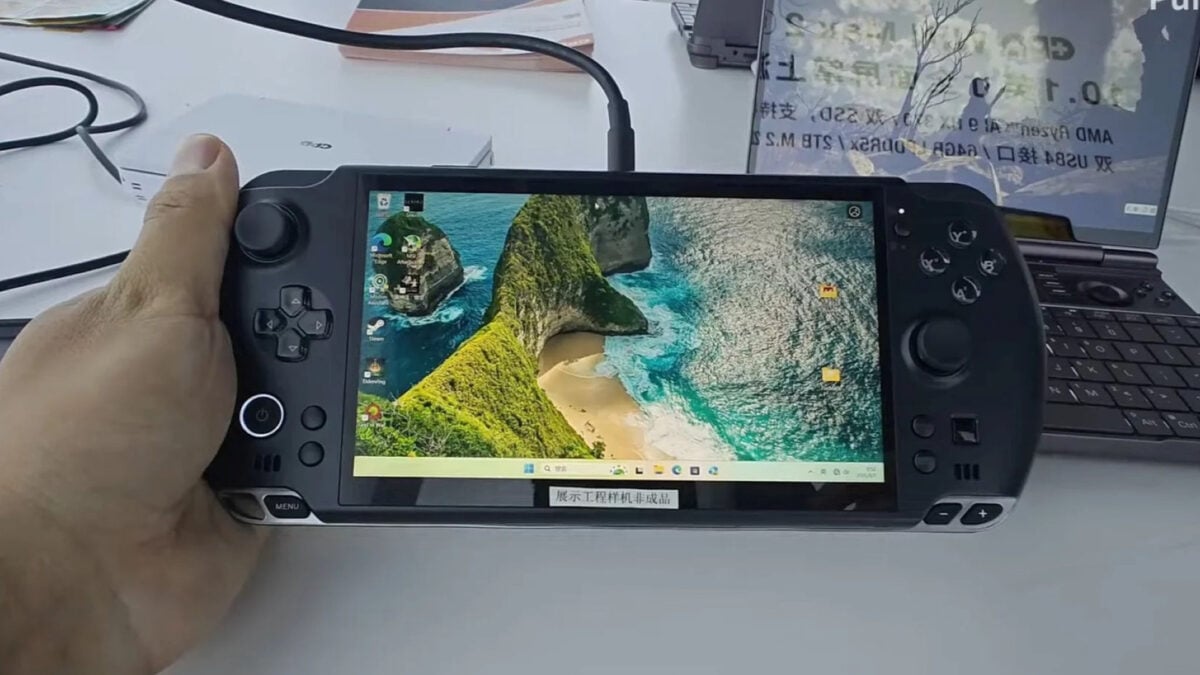This Gaming Handheld's External Battery Isn't as Dumb as You Think

As we’re waiting for the ROG Xbox Ally and the next generation of slightly more powerful gaming handhelds to hit the scene, I’m stuck thinking about where portable gaming could go if designers got a little weirder with it. China-based company GPD, known for offering off-kilter laptops that straddle a business and gamer lifestyle, has a handheld PC that’s equal parts enticing and ludicrous. It’s the battery, of all things, that makes the device stand out, literally.
The GPD Win 5 handheld PC bears a striking resemblance to the PlayStation Portable. Compared to the Win 4’s T-Mobile Sidekick-like slide-up keyboard, the Win 5’s standout “feature” is its external battery. Yes, you heard that right. The device’s battery is one of the largest we’ve seen on a handheld—nearly as big as the 7-inch screen. The battery can attach to the back of the device, or you can play with the power unit outside and wired up. Want something even weirder? The Win 5 has a tray like a SIM card slot that houses an SSD for easily swappable storage.
[embed]https://www.youtube.com/watch?v=T0vd_38tB_8[/embed]
At its showcase at the ChinaJoy tech conference in Shanghai, China, GPD claimed its device can achieve graphics capabilities equal to that of an Nvidia GeForce RTX 4060 graphics card, though we’ve yet to have it in our hands to test that hypothesis. The massive battery pack itself has a 5,170mAh capacity and is rated for 80Wh. GPD also makes a docking station for the handheld that uses the bottom USB-C connection. You can plug the battery into the dock, then connect a monitor for a full desktop experience.
Beyond it looking like a grown-up PlayStation Portable, the GPD Win 5 takes the prize as the most outlandish handheld I’ve seen as of late, and that includes devices made to resemble a Nintendo DS and even the OneXSugar Sugar 1 dual-screen device with folding arms. Along with 32GB of RAM, the Win 5 is supposed to house up to an AMD Ryzen AI Max+ 395 chip, which has proved itself an extremely powerful APU—or accelerated processing unit—for graphically intensive tasks like gaming. You can find the similar chips on larger gaming tablets like the top-end Asus ROG Flow Z13 or in small, contained PCs like the Framework Desktop. On a handheld, the Ryzen AI Max is like putting a rocket engine in a child’s cardboard spaceship.
People online were quick to deride the high-end APU and the necessity of a separate battery. After all, how can anybody call a device portable if you need to lug an extra battery around as well? In a post to X, GPD said the device has a power draw of 70W or more, which is over 40W more than most modern handhelds can handle. The company said “an internal battery alone would not suffice.” The company is basically telling users that if they want near-desktop-level performance out of their handheld, then they need a novel battery solution first.
Here’s a response to some of the topics everyone has brought up regarding the Win5:
Design Philosophy of the Win5
The WIN5 is a bar-form handheld gaming console designed with maximum performance in mind. Its form factor is similar to traditional handhelds like the Steam Deck and…— GPD Game Consoles (@softwincn) August 6, 2025
If there’s one main hindrance to mobile devices, it’s the battery. High-powered XR headsets like the Apple Vision Pro require users to slip a wired battery into their pocket during use. We expect the upcoming Samsung Project Moohan Android XR headset to have similar battery limitations. These devices require higher-end chips to process high-resolution images, which means they need larger batteries to make use of higher TDP, or thermal design power. If those batteries were housed on the headsets, they would be far heavier than they already are.
[embed]https://www.youtube.com/watch?v=N23tnjGkHPw[/embed]
Handhelds normally perform on lower resolutions than your typical higher-end PC, and users who want to play for more than two hours need to run them at lower wattages anyway. This isn’t as big of a deal when you’re paying $550 for a Steam Deck OLED. The limited graphics performance on a handheld like the Asus ROG Ally X can be occasionally grating when you’re forking over nearly $1,000 for it. The GPD Win 5 won’t be the most mobile of any handheld, but it’s better to think of it as something closer to a gaming laptop, just with built-in gamepad controls. The dock could prove even more necessary for using the handheld as a kind of plug-and-play gaming console. This is a performance-first device, and any potential buyers need to treat it as such. We still don’t know how much it will cost, but we can assume it won’t be cheap when it hits the market at some unknown date in the future.









